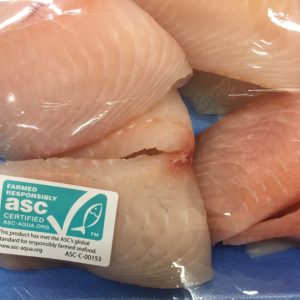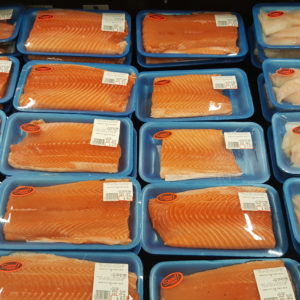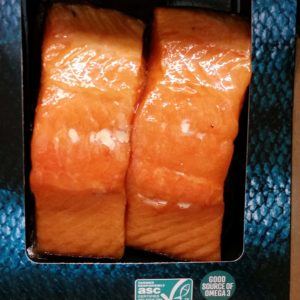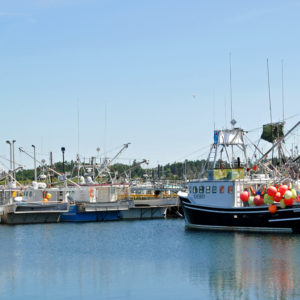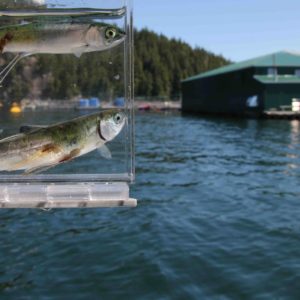What’s Behind the Label Report
It is critical for seafood eco-certification standards and processes to be credible, and to lead to genuine sustainability improvements on the water.
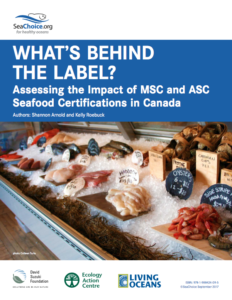
Our report is the first review of all Canadian Marine Stewardship Council (MSC) and Aquaculture Stewardship Council (ASC) certifications that examines the application of the Standards, and the subsequent impact of certifications on environmental improvements in Canadian fishery and aquaculture practices.
While both eco-certifications may have been on the cutting-edge of best practices when they began, our analysis suggests this is no longer the case.
What’s Behind the Label? is supported by Technical Report on MSC and ASC certifications.
MSC Key Findings
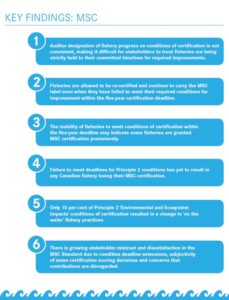
For most Canadian certifications, MSC has acted as a catalyst for increased data transparency, improved research and analysis and more timely policy implementation from the Department of Fisheries and Oceans Canada (DFO). Certified fisheries and DFO do respond to MSC certification requirements, and have invested resources to meet the certification milestones, as demonstrated through the completion of certification requirements related to target stock and management policies.
However, our analysis of how MSC certification is being implemented in Canada reveals several problematic findings. Even with certification requirements meant to bring fisheries up to MSC’s “global best practice level”, our analysis found little change to fishery practices on the water to directly improve their impacts on habitat, non-target species and ecosystem function. We found significant timeline extensions and flexible interpretations of the application of Standard requirements across several certifications. With a vast majority of Canadian fisheries MSC certified, there may be little leverage left for further improvements in sustainability until the MSC Standard requirements themselves are raised and implemented more strictly.
ASC Key Findings
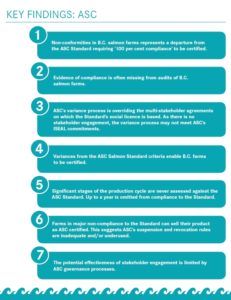
Our review of all certifications and audits to date found emerging patterns with the implementation of the Salmon Standard in Canada that suggest the ASC is lowering its sustainability bar to accommodate current industry practices.
We found the Standard’s claim of “100 per cent compliance in order to be certified” to be misleading. In fact, salmon farms in British Columbia have non-conformities raised regularly, and rely on variances to the Standard criteria to be certified. These variances typically defer to government regulations that are below the ASC Standard.
We also found up to a year of the production cycle is never assessed by auditors for compliance. We are concerned about the adequacy of ASC’s suspension and revocation rules for certified farms as well, which violate the Standard’s requirements.
For example, a certified farm that experienced seven sea lion deaths (five above the Standard threshold), a breach that would have disqualified the farm from initial certification, has harvested and entered the market twice with the ASC certification. If left to continue, these identified concerns will undermine efforts to raise the sustainability bar and could threaten the credibility of the ASC label.
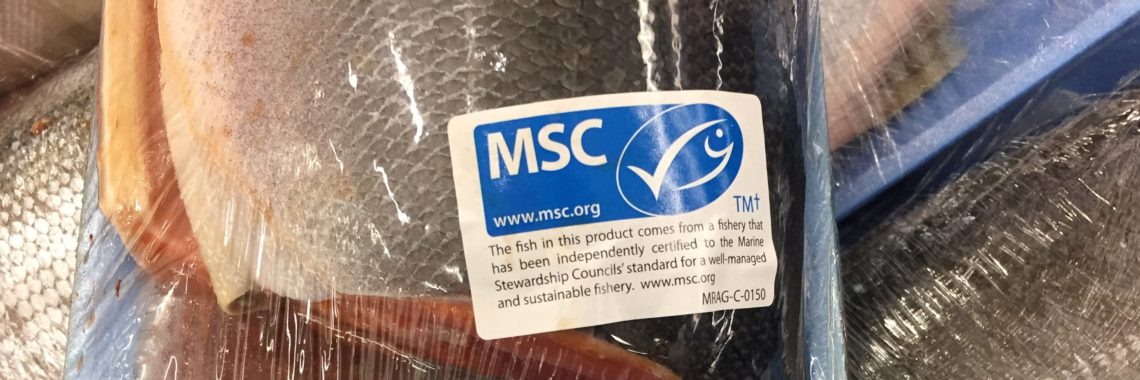
Should consumers and retailers continue to buy MSC and ASC certified seafood?
While both eco-certifications are the most highly regarded in comparison to their peers, they are not without their faults. There are a handful of fisheries we do not recommend to consumers, even with the MSC label (for example Canadian surface longline swordfish).
For farmed fish, we consider ASC shrimp and shellfish certifications to be sustainable options. However, we disagree with the recent Seafood Watch analysis of the ASC Salmon Standard, which concluded that ASC certification is equivalent to their own “good alternative” ranking. We recommend that consumers support more sustainably farmed options, such as closed containment farmed salmon, Arctic char and rainbow trout.
